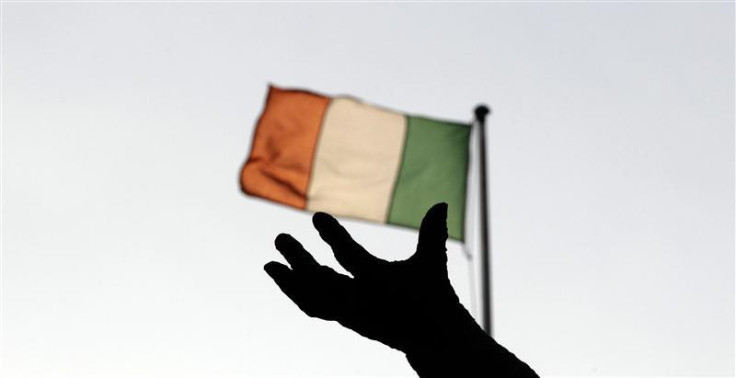Ireland Housing Woe Spawns 'Occupy NAMA' Movement

Ireland had a rather gruelling year in 2011 with the Minister for Finance, Fine Gael's Michael Noonan, capping it in early December 2011 with the country's fourth austerity Budget in a row. Aiding Mr Noonan in this somewhat unpleasant if necessary task, was his Labour, Coalition partner, Brendan Howlin.
Mr Howlin fills the newly created ministerial position of Minister for Public Expenditure and Reform and told the Irish Times in April 2011 that Ireland faced a profound and complex economic crisis "where we are facing a battle on three fronts - mass unemployment, a major failure in banking, and a fiscal crisis." Many note however that to date, both gentlemen of the recently elected Fine Gael-Labour Coalition Government have avoided a potential fourth battle over pay with Ireland's public sector unions. Never mind, the three already mentioned are not going away any time soon.
The December "adjustments" amount to some €3.8 billion consisting of €2 billion in cuts to Government expenditure, especially in the social and welfare budgets, with the remainder sourced from increased Government revenues through raising consumption and capital taxes. Both Mr Noonan and Mr Howlin will be hoping that the announcement by the Republic's Central Office of Statistics just after the New Year that the economy contracted by 1.9 per cent during the third quarter of 2011, will be a temporary blip.
In line with Ireland's Deficit Reduction agreement, drawn up/imposed by the International Monetary Fund (IMF), European Central Bank (ECB), and European Commission (EC) in November 2010 for the country's €85 billion bailout, the December Budget is intended to reduce the country's Deficit to GDP ratio from 10.1 per cent, set for 2011, to 8.6 per cent for 2012.
This will be a tough task for although Mr Noonan was able to work his Irish charm on these bodies and broker a deal in July 2011 which reduced the interest rate charged on the bailout funds (Greece and Portugal were also included) no further changes to the budgetary conditions were allowed and over the last half of 2011 economic conditions worsened and Mr Noonan has admitted that second-half tax revenues for the year had weakened. The Irish Government's announcement on 04 January 2012 that it had actually bettered the 10.1 per cent target Deficit to GDP ratio for 2011 at 9.9 per cent was a small piece of good news in an otherwise depressed outlook.
Hardly had the New Year begun than, on 03 January 2012, Lisa O'Carroll reported in The Guardian that the Sherry FitzGerald Group calculated that property prices in Dublin had collapsed by 65 per cent over the past five years and by 60 per cent during the same period throughout the rest of Ireland.
Such figures can only cause a detrimental affect on important sectors of the Irish economy, not just the construction and property sectors but also the already battered banks. The value of the property holdings in the National Asset Management Agency (NAMA) the Government's toxic depository of bad debts, largely from the bailed out banking sector, may require adjusting and even if this is not the case, it is likely to take much longer before the Government, and taxpayer, see any return on their money.
Finally but not least, such a severe decline implies a high proportion of mortgagees have considerable negative equity, strangling the housing market further and badly affecting consumer confidence and spending.
On a slightly less pessimistic note, Ms O'Carroll quoted other surveys that found the drop on their population of housing stock to be in the region of 50 per cent over the last five years, though one company recorded a fall of eight per cent in the final quarter of 2011 alone and she was told by Ronan Lyons, an economist, that it "was no surprise considering that only 13,000 mortgages completed in 2011, compared to 200,000 in 2006!"
Not helping the property market has been the thousands of houses, as well as commercial buildings, built during the boom years or coming to completion at the start of the bust. Most of those built on a speculative basis, in and on the outskirts of nearly every town in Ireland are now, in the main, lying unsold, empty and in the worst cases falling into disrepair or dereliction.
Henry McDonald in a Guardian article on 03 January, puts the number of vacant properties in the Republic (population about 4,670,000) at 400,000, and writes that:
"The 600 or so 'ghost estates' built in the Celtic Tiger years have come to symbolise the Irish recession...Economists put the Irish bank losses at about €106 billion."
Thousands of these properties having been built by individuals and/or companies now bankrupt - where they bothered filing returns in the first place - are now in the possession of NAMA. Given time - maybe decades - that Agency could expect to offload these premises once market conditions recover. However, events have taken an interesting twist in Ireland
The "Occupy NAMA" protesters, no doubt taking their queue from Occupy Wall Street and the like, have decided not to wait for the improvement in those market conditions. More interesting is the fact that they may not be breaking the law - at least for some in Ireland.
In Mr McDonald's same article he interviewed Occupy Movement leader, Liam Mac an Bháird who occupied a house (which he concedes was illegal) in autumn in Dublin's northside which had been empty for several years:
"There are thousands of homeless in this country with about 2,000 on the streets of Dublin alone tonight. Yet across the city there are thousands of flats, apartments, houses lying empty...These properties could lie vacant for up to 10 years or more... so why not put homeless people into them?"
Mr Mac an Bháird emphasises that: "There are no drugs or drink tolerated in these places (that they occupy)...And we do not take anything that does not belong to us in the properties we squat in."
Maybe this occupation of a long-vacant property now belonging to the State/taxpayers, through NAMA; where no harm or damage to the property occurs, where indeed the property is looked after by the occupier, albeit squatter, explains the decision of a judge in October 2011.
Writing in the Irish Times on 07 January, Brian O'Connell reports on the Occupy Cork attempt to open up an empty city centre building, Stapleton House, and make it "a music school, creche, meditation centre and soup kitchen" on 23 January, all users stating that they are willing to pay a nominal rent.
Not afraid to challenge the law, both Occupy Cork and Occupy NAMA appear to relish a chance to clarify their position and they certainly have a great deal of public support. And also, as Mr O'Connell reports:
"What happens next is anyone's guess. At least one case has already dealt with the takeover of an empty property. In October, Judge Catherine Staines dismissed a prosecution for trespass against William Tuohy, a separated father of seven, who made a vacant NAMA property his home in Tullamore."
© Copyright IBTimes 2025. All rights reserved.






















